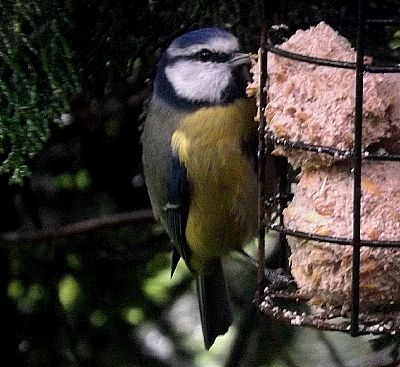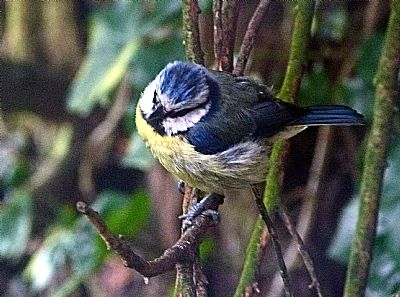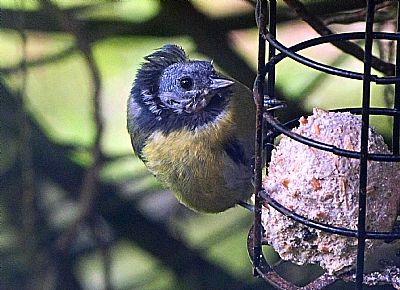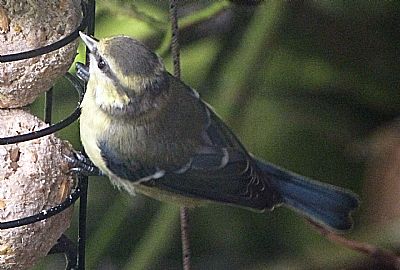BLUE TIT : Cyanistes caeruleus
Also see : TITS
This is one of our most common birds and is a frequent visitor to feeders.
Breeding starts from mid-April. They nest in holes or cavities, usually in a tree or wall, but also in banks and nest boxes. A nest is a cup of moss, leaves, hair and grass which is lined with down, feathers and hair. The female builds the nest and lay seven to twelve (sometimes five to sixteen) eggs. They are a smooth glossy white with a variable amount of purple-red or reddish-brown speckles. The female alone will incubate the eggs for twelve to sixteen days. Both tend the young who remain in the nest for fifteen to twenty-three days. [Arkwildlife].

This one is eating from a fatball with seeds. Their normal diet is insects, caterpillars, seeds and nuts.

Soaked but undeterred by a shower.

Looking a little embarrassed. Here we see a bald blue tit at the feeder. What has happened to it?
The appropriately named Bald Hiker website has some suggestions: Many of you may have seen it before and there are a few causes but the main reason for the affliction is mites or other parasites from the nest. Other reasons it could possibly be is hassle from siblings in the nest by being low in the pecking order or some stress related thing. I had one here last year with a similar problem and his feathers grew back to 100% before too long. This one was eating and flying around as happy as any blue tit so I am sure all will be well here in the end. [Bald Hiker].

Telling male and female blue tits apart is difficult. They both have the striking blue colour. This one is a juvenile that has not yet gained that plumage. It is mid-July, it is almost fully grown and able to join in the melee around the bird feeder.

The same bird from a different angle. You can be sure that it is a blue tit from the "robber eye band" across its face.
THE BALD HIKER : https://www.baldhiker.com/the-bald-blue-tit/

